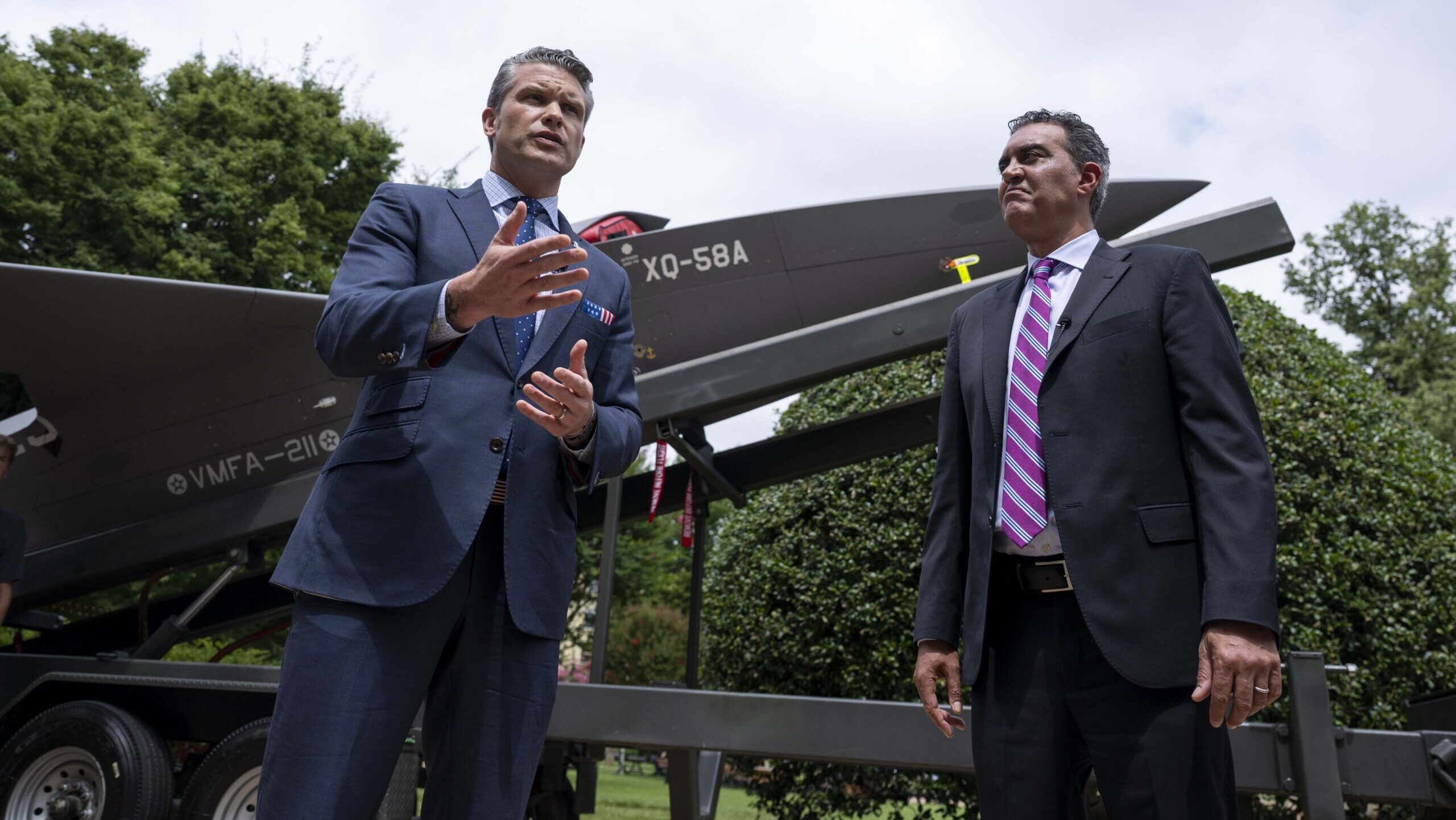Copyright Breaking Defense

WASHINGTON — A major acquisition shakeup is poised to hit the Pentagon, and details have begun to leak out. On Nov. 7, Defense Secretary Pete Hegseth is planning a speech to roll out the Trump administration’s plans to change the defense acquisition system. The address appears to be a sequel to Hegseth’s Sept. 30 gathering of general officers, but replacing the uniformed leaders with top executives from across the defense industry — both from the major players and from the ever-growing startup scene. “The Secretary of War invites your CEO and a plus one to attend his address on the Arsenal of Freedom,” an email to industry obtained by Breaking Defense reads, listing the time of the event as 2 p.m. on Nov. 7. The email later notes that the invitation is “only transferable to a COO or equivalent,” an indication Hegseth’s team wants only the highest-level executives in place. The tone that Hegseth will strike when talking to industry is unknown, but both he and other DoD leaders have made clear they want to see new entrants step up, potentially at the expense of major defense primes. The expectation is that there will be a number of reforms announced at the speech, and rumors are flying fast. But the reality is that Hegseth’s speech will mark an important marker, but not the starting point, for acquisition reform, as both OSD and the services have been making changes since the Trump administration took over in January. Here is what has been happening with reform efforts over the last 10 months, and some topics to keep an eye on ahead of Hegseth’s speech. Big Picture Shifts At OSD One major change that is expected to be announced by Hegseth involves how weapon sales are handled out of the Pentagon. Politico reported this week (and Breaking Defense has since confirmed) that the Defense Security Cooperation Agency (DSCA), the Pentagon office that manages Foreign Military Sales cases, would move from the department’s policy office to its undersecretary of acquisition and sustainment. That’s a move that defense industry groups have pushed for in the past, in hopes it would speed up a process often derided as too slow. But there have been concerns in the past that moving DSCA out of policy would remove the strategic thinking behind approving or disapproving arms sales and turn it into a purely logistical exercise. “If this reporting is true, this would be a welcome development for industry,” Dak Hardwick, vice president for international affairs at the Aerospace Industries Association, told Breaking Defense. “Aligning these functions under Acquisition and Sustainment would accelerate the FMS process — an urgent priority given today’s threat environment.” Another change that may be in the works is the creation of a series of “direct report program managers,” who would have oversight of key programs for the Air Force and Navy — but report directly to Deputy Defense Secretary Stephen Feinberg, rather than to the service acquisition officials. As Breaking Defense reported in August, these new “czar” roles would mirror the setup for Golden Dome, and could include high-profile programs such as the B-21 Raider stealth bomber, F-47 sixth-gen fighter, Sentinel ICBM and navy submarine programs. According to sources, Vice Adm. Robert Gaucher, commander of naval submarine forces, is being eyed for the submarine role, while Lt. Gen. Dale White, the Air Force’s military deputy for acquisition, has been considered to run the Air Force effort. Whether this change could be announced by Hegseth on Nov. 7 is unknown at this time. What We Know About The Army’s Plans To Streamline And Consolidate In April, Breaking Defense first reported that the Army was planning to rearrange and consolidate its 13 Program Executive Offices down to the single digits. Politico this week confirmed that the 13 PEOs will indeed be consolidated, with the announcement expected to be part of Hegseth’s speech. The consolidations and rearrangements include, but are not limited to, PEO Ground Combat Systems and PEO Combat Support & Combat Service combining in some areas, while PEO Command, Control, Communications, and Network, and PEO Intelligence, Electronic Warfare and Sensors plan to merge. Since Breaking Defense reported on the possible changes in April, efforts have quietly proceeded apace, with the service cancelling or downsizing programs and drawing down Army Futures Command by combining it with Training and Doctrine Command (TRADOC) to create the new Transformation and Training Command. Both those offices were led by four-star generals, and the leader of T2COM, Lt. Gen. David Hodne, is currently awaiting his fourth star. Further, the looming acquisition shakeup was teased earlier this month when Army Secretary Dan Driscoll said a “big announcement” was coming soon, pledging a “consolidation and streamlining of how we buy things in the Army” going forward. He added that the Army should adopt more of a Silicon Valley-like mindset. “Those groups have been, and that leadership has been, so poor for so long that we are going to try to mimic what works really well in the private sector,” Driscoll said during the AUSA conference. “So if you were looking at what made SpaceX or Tesla work really well, my impression is that it was combining manufacturers and engineers, putting them all on the floor together. Forcing them to work together, and that speeds up the cycle of innovation for us.” Air Force, Space Force Shake Ups If the plan to create a czar for high-profile Air Force programs comes to fruition, it would be a massive change to the service’s portfolio. But other efforts are underway as well. Service officials recently killed a Biden-era initiative called the Integrated Capabilities Command that would have overhauled how the service sets requirements for buying weapon systems. The Air Force now instead plans to nest those functions in an existing structure known as Air Force Futures. More changes could be in store once Gen. Kenneth Wilsbach, who was confirmed Thursday by the Senate as the next Air Force chief of staff, settles into his new chair. However, systemic acquisition changes could be more difficult to carry out considering the service’s lack of leadership in a key role. The Air Force acquisition chief job, known as the assistant secretary for acquisition, technology and logistics, hasn’t had a Senate-confirmed leader since January. William Bailey is currently performing the duties of the job. By contrast to the other services, the Space Force has a relatively small number of acquisition executives — although there are numerous civilian offices and military units that have the power to weigh in on weapons buying requirements and processes. At the top is the Department of the Air Force service acquisition executive for Space, who reports directly to the secretary, which by law is a position held by the assistant secretary for space acquisition and integration. That post is currently vacant, with Maj. Gen. Stephen Purdy acting on an interim basis. Purdy is slated to leave his acting position in January at the latest, to step back to wearing one hat as military deputy to the office — earlier if the Air Force can put in place a civilian deputy to take over before then, he told reporters at the AFA conference on Sept. 24. Purdy’s office has nine space acquisition officials reporting to him: seven program executive officers under Space Systems Command each responsible for a mission area, along with the directors of the Space Rapid Capabilities Office and the Space Development Agency. One former Pentagon acquisition official said that, from what has been circulating in the press and in rumor, Hegseth’s intent may be to get rid of the SAEs and instead have PEOs report directly to the service secretaries. But, the former official noted, this plan would not work for space acquisition unless Congress concurred. “Their reporting to the Service Chiefs would be a big change. I think that’s the way it used to be a long time ago, pre Goldwater-Nichols, and it didn’t work well,” the former official said. Further, the official said that there is widespread speculation that the planned acquisition changes will include the elimination of certain kinds of contract vehicles, including cost-plus contracts — something that former DAF SAE Frank Calvelli during his tenure repeatedly told space PEOs to avoid. The Navy, Marine Corps Have Already Slimmed Down For the Navy, Secretary John Phelan has spent the past several months actively slimming down the service’s acquisition offices. In August, Phelan shut down several preexisting offices that were focused on developing or procuring new technologies, such as the Disruptive Capabilities Office established by former Secretary Carlos Del Toro. In their place, he established a Naval Rapid Capabilities Office, and tapped Vice Adm. Seiko Okano, one of the service’s top uniformed acquisition officials, to lead the new office. In early September, SECNAV moved to consolidate several offices focused on robotics and autonomous systems, directing the service to establish a portfolio acquisition executive in their place. And late last month, Breaking Defense exclusively reported that the Phelan was cutting a number of foreign affairs staff and installing a chief of naval policy to wholly replace what was the deputy undersecretary of the Navy for policy position. All of the memos written by Phelan and published in recent months have directed ongoing reviews and restructuring to accompany his initial directions.



